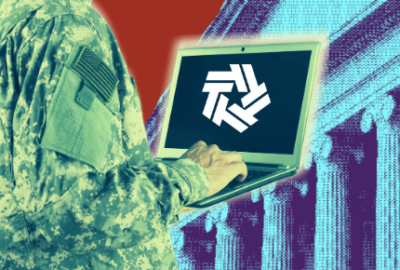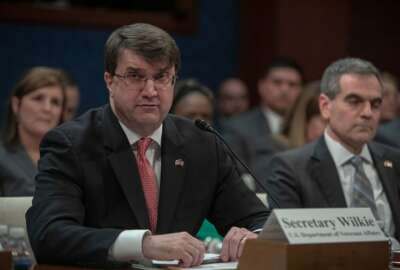

Veterans Affairs has finished its highly-anticipated strategic review of the electronic health record modernization program, but it needs more time to digest the...
The Department of Veterans Affairs has finished a highly-anticipated strategic review of its massive, 10-year electronic health record modernization program, but it needs more time to digest the results and present a path forward to Congress and the public.
VA launched the strategic review back in March after hearing, as Secretary Denis McDonough described them, “systemic failures” and concerns about the EHR rollout from staff at the first go-live site in Spokane, Washington.
“We’re very close to finalizing the next steps, including changes to the deployment effort to ensure that we come in on time, on budget and, most importantly, provide the best care for our vets and the best experience for our providers,” McDonough told reporters Wednesday.
McDonough has previewed some of the review’s findings recently in testimony before Congress. VA continues to believe in Cerner’s commercial product, but the department is considering changes to the project’s governance, training and organizational structure.
The department also decided it will conduct an enterprise-wide review of physical and IT infrastructure needs for the EHR program, Jon Rychalski, VA’s chief financial officer, said Thursday at a hearing before the House Veterans Affairs Technology Modernization Subcommittee.
VA’s inspector general previously found vast inconsistencies in the department’s cost estimates for the physical infrastructure upgrades needed to support the EHR.
Congress is skeptical, given the department’s track record with the EHR and other major IT modernization projects, that VA is positioned to manage the funds effectively — particularly as it juggles a growing technology to-do list.
“I appreciate the Department of Veterans Affairs’ efforts to modernize their electronic health record system, and I am grateful they are working to fix problems in the system,” Matt Rosendale (R-Mont.), ranking member of the House VA Technology Modernization Subcommittee, said earlier this week in a statement. “However, I am reluctant to commit to additional spending or expansion into other facilities until such time we have seen a fully functional system at the lone hospital where it was introduced over a year ago. Billions of dollars have already been spent and we have yet to see a workable product.”
VA is asking for $2.7 billion for the electronic health record modernization program in 2022, an additional $56 million over current levels.
Beyond the massive, decade-long EHR project, VA is modernizing its financial management business and supply chain systems. It’s expanding bandwidth so it can sustain a growing telehealth and telework program. And it’s overhauling the legacy VA systems that administer education and housing benefits under the GI bill.
The list, which is often driven by congressionally-driven projects or initiatives, continues.
VA’s IT budget has grown 34% since 2019. Despite the increase, the department has “sizeable technical debt,” Rychalski said.
“The primary cause of this deficit is a failure to properly account for the IT costs associated with new initiatives over many years,” he said. “Rather than include IT as part of the inherent costs of a new benefit or initiative, other IT accounts were raided to fund the new initiative. Many years ago, additional IT capability for a new initiative may have resulted in only a modest cost. Today virtually every new initiative or requirement has a substantial IT resource requirement.”
The department on Thursday tried to convince Congress it has a better handle on that debt — and that it’s equipped to handle the largest IT modernization push in its history.
“We for the first time have a really good picture of what our technical debt is,” said Dominic Cussatt, VA’s acting chief information officer. “We do have a detailed plan regarding how to resolve it in a four-year time span.”
VA envisions IT spending will go up 12% next year. The department will, for the first time, tap into $670 million from its transformation fund, a source of five-year expiring funds VA can use on IT and other physical infrastructure needs.
Rychalski said the department consistently has between $500 million-to-$1 billion in the transformation fund each year, which he sees as a relatively consistent source of funding for VA IT projects in the future.
The department is also standing up its IT investment board, with the chief financial officer, chief information officer and chief acquisition officer serving as co-chairs. Undersecretaries from the Veterans Health Administration, Veterans Benefits Administration, National Cemetery Administration and other VA management offices will also serve on the board.
“One of the big things that will come out of there is return on investment assessments,” Cussatt said. “With that we’re implementing a capital planning and investment control process, so that we understand what our investments are, what the decisions are in terms of priorities of the mission and business. And then in the end before we make decisions to reinvest, what was the ROI on that?”
Rychalski said the IT investment board will and already is helping VA better manage its technology projects, and the Government Accountability Office took it as a “good sign” that the department has taken steps to implement such a process.
“We were chasing our tail with new requirements with ever-increasing IT costs, and we hadn’t properly accounted for those and asked for the resources when we needed it,” Rychalski said. “The IT investment board has done a lot to bring us together and to focus and make us much more disciplined, but we’re not where we need to be yet. There’s no question about that.”
The department is beginning to use the IT investment board to make decisions about the EHR program, Rychalski added. That’s become especially critical while VA waits for the Senate to confirm Donald Remy as its new deputy secretary.
The VA deputy secretary, per Congress’ direction, is supposed to manage the EHR modernization and budget process.
“We’re working more of these issues through the IT investment board, because they obviously have cross-program effects into IT and into VA infrastructure,” Rychalski said. “We have a pretty good sense across the organization from a finance, IT and acquisition standpoint what’s going on. We consider them in that venue, and we have a broader audience there as well. If there are residual impacts on other parts of the organization, we all have a better sight picture into [what’s] going on.”
Copyright © 2025 Federal News Network. All rights reserved. This website is not intended for users located within the European Economic Area.
Nicole Ogrysko is a reporter for Federal News Network focusing on the federal workforce and federal pay and benefits.
Follow @nogryskoWFED



